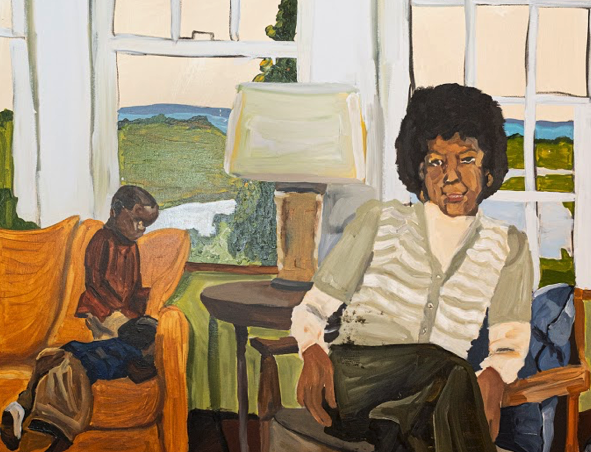
From the mid-16th century through the late 18th century, the transatlantic slave trade transported millions of enslaved African people across the Atlantic Ocean to be sold for labor at ports across Latin America, North America, and the West Indies. Despite being uprooted from their native lands and dispersed across thousands of miles, cultural traditions were retained and passed down intergenerationally into modern day.
The Mare Projects art collective aims to explore that history and the dissemination of black art, culture, and community around the world through a new, nomadic residency program for emerging artists from Baltimore and beyond.
“I wanted to create a dialogue,” says curator Tiffany Auttrianna Ward, who conceived the project with scholars Nohora Arrieta Fernández and Tatiane Schilaro Santa Rosa. “Anti-blackness is internalized in the ways that we speak about the cities that we are from, especially if they are known for being black. A residency is a beautiful way to get people to learn about our differences and our [shared] experiences.”
During the initial residency, which took place in August and was hosted in collaboration with mTkalla Keaton, creative director of Sunspots Studio in West Baltimore, Mare commissioned Dominican artist Raelis Vasquez and Baltimore-based African-Americanartist Jerrell Gibbs to create new works that consider real and imagined visualizations of family through the diasporic lens, with selections now on view at Gallery CA from September 13 to October 13.
Both Vasquez and Gibbs are celebrated for their austere and expressive portraits of African-American and Afro-LatinX families, young adults, and children. The artists situate their subjects in intimate interiors and warmly rendered community spaces, with the resultant paintings standing as affirming counter-narratives against negative representations of black communities.
In Vasquez’s “La Vecina del Pueblo de Dios,” an oil work on canvas, for example, an unknown woman seated in a rocking chair lovingly feeds a small infant in a humble rural landscape, reminiscent of Catholic iconography that features the Virgin Mary holding Christ. In Gibbs’ “Window Seat,” an oil and acrylic work on canvas, an anonymous woman sits in a posh living room while two toddlers play behind her. Both works explore black motherhood as a mundane and sacred experience.
Ward hopes that the works created during the residency will spark critical dialogs about identity and culture. Although launched in Baltimore, future iterations will take place in host spaces in cities and countries across the diaspora.
“It’s about bringing us back together,” says Ward. “It’s about seeing each other and appreciating ourselves through our own lenses.”